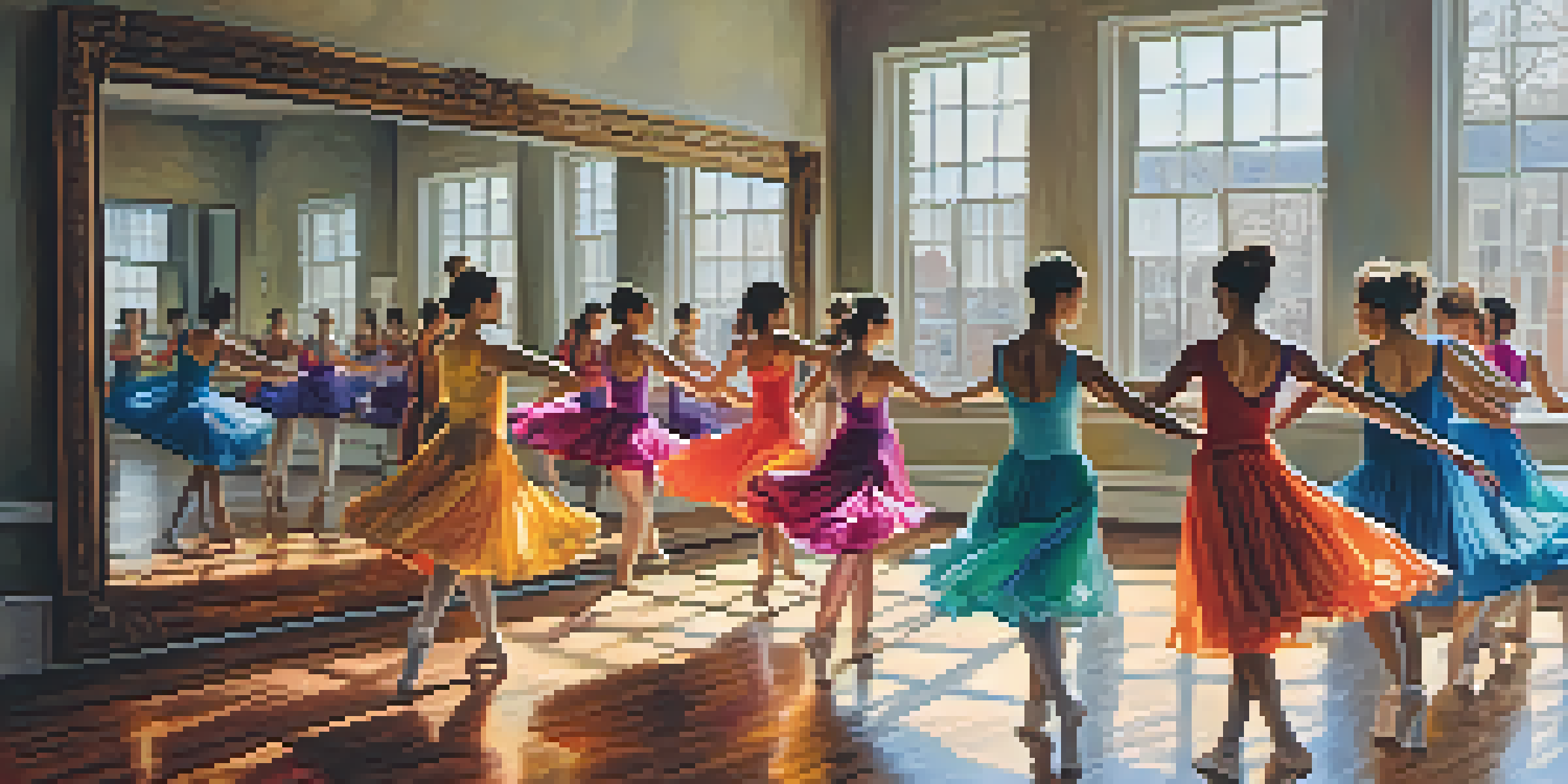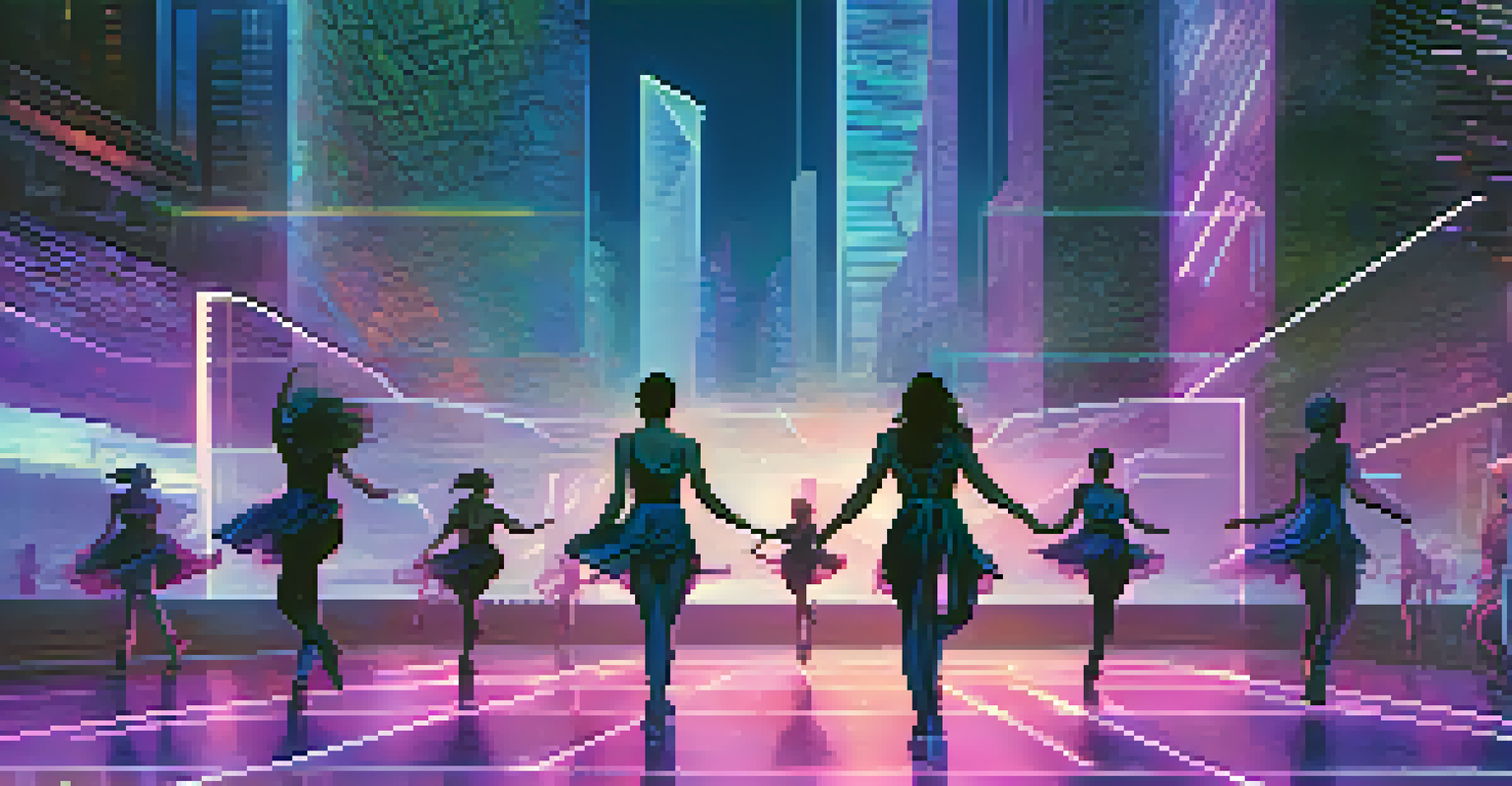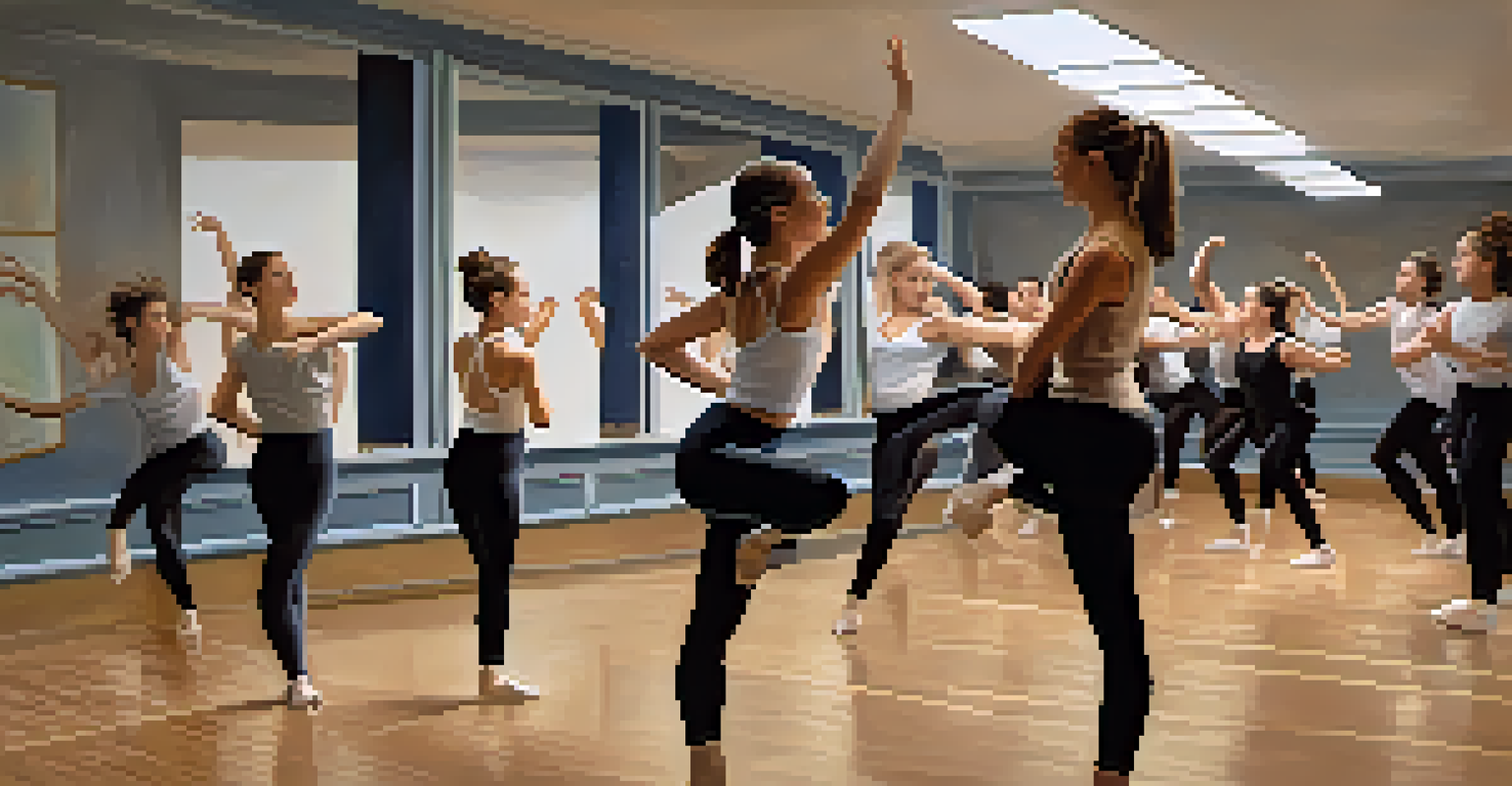Dance and Blockchain: Revolutionizing the Industry's Future

Understanding Blockchain Technology in Simple Terms
At its core, blockchain is a decentralized digital ledger that records transactions across many computers. This means once data is recorded, it cannot be easily altered. Imagine it like a dance floor where every move is captured, ensuring transparency and authenticity.
Blockchain is the tech revolution that is transforming how we create, share, and monetize art.
For dancers and choreographers, this technology offers a new way to protect their creations. Instead of relying solely on traditional contracts, they can use blockchain to secure their work directly, making it harder for others to claim it as their own.
In essence, blockchain provides a safety net for artists in a world where intellectual property theft can be rampant. Just as dancers trust their partners to support them, they can now trust blockchain to safeguard their artistic contributions.
Empowering Dancers with Smart Contracts
Smart contracts are like the choreographed routines of blockchain—they automate and enforce agreements without needing intermediaries. Think of it as a dance performance where every dancer knows their role and timing perfectly, ensuring a seamless show.

In the dance industry, these contracts can simplify payments and royalties. For instance, a choreographer could set up a smart contract that automatically pays dancers based on ticket sales, ensuring everyone gets their fair share instantly.
Blockchain Secures Dance Creations
Blockchain technology offers dance artists a reliable way to protect their intellectual property and creative works.
This level of automation not only saves time but also builds trust among collaborators. Just as a well-rehearsed performance builds confidence, smart contracts foster a reliable working environment for dancers and choreographers alike.
Enhancing Transparency in Dance Collaborations
In any collaborative endeavor, especially in dance, transparency is crucial. Blockchain technology ensures that every transaction and agreement is visible to all parties involved, akin to a rehearsal where everyone is aware of their cues.
Innovation is the ability to see change as an opportunity - not a threat.
This transparency helps to eliminate disputes over payments or credit for creative contributions. Dancers can see exactly how much they're owed and when, reducing the chances of misunderstandings that can disrupt harmony.
Much like a clear communication channel between dancers during practice, blockchain fosters an environment where trust and collaboration can thrive, enhancing the overall creative process.
NFTs: A New Avenue for Dance Artists
Non-fungible tokens (NFTs) are revolutionizing how dancers can monetize their work. Imagine being able to sell a unique dance performance or choreography as a collectible—this is the power of NFTs.
For artists, NFTs provide a platform to reach global audiences while retaining ownership and control over their creations. Just as a dancer expresses their individuality through unique moves, NFTs allow them to showcase their distinct styles in the digital realm.
Smart Contracts Simplify Payments
By using smart contracts, dancers can automate payments and ensure fair compensation based on agreed terms, enhancing collaboration.
This shift not only opens new revenue streams but also builds a deeper connection with fans. Fans can own a piece of their favorite dancer's artistry, creating a community that celebrates the art form in innovative ways.
The Role of Blockchain in Dance Education
Blockchain can also play a pivotal role in dance education by providing verified credentials. Imagine a world where a dancer's training and achievements are recorded on an immutable ledger, showcasing their journey and skills.
This could revolutionize how dance schools and studios assess potential students. Instead of relying solely on auditions or interviews, they could verify a dancer's background and training history, much like reviewing a curriculum vitae in a job application.
As a result, it creates a more equitable system where talent shines through, regardless of a dancer’s background. Just as every dancer deserves the chance to be seen, blockchain ensures that their credentials are recognized and respected.
Challenges and Concerns of Integrating Blockchain
While the benefits of blockchain are compelling, there are challenges to consider. For instance, the technology can be complex and intimidating for those not tech-savvy, much like learning new dance styles can be daunting for beginners.
Additionally, the environmental impact of blockchain, particularly in energy-intensive processes, raises concerns. Just as dancers are mindful of their bodies and surroundings, the industry must consider sustainable practices when adopting new technologies.
NFTs Create New Revenue Streams
Non-fungible tokens (NFTs) allow dancers to monetize unique performances and connect with global audiences while retaining ownership.
Addressing these challenges will require collaboration and education within the dance community. By working together, just as dancers do in a performance, they can find solutions that balance innovation with responsibility.
The Future of Dance in a Blockchain-Driven World
Looking ahead, the integration of blockchain technology into the dance industry holds immense potential. It promises a future where artists can thrive creatively and financially, much like a dancer finding their rhythm on stage.
As more dancers and choreographers embrace these innovations, we may witness a transformation in how performances are created, shared, and monetized. This evolution could lead to a more vibrant and inclusive dance community.

Ultimately, the intersection of dance and blockchain is an exciting frontier. Just as every dance tells a story, this technological evolution will shape the narrative of the dance industry for years to come.